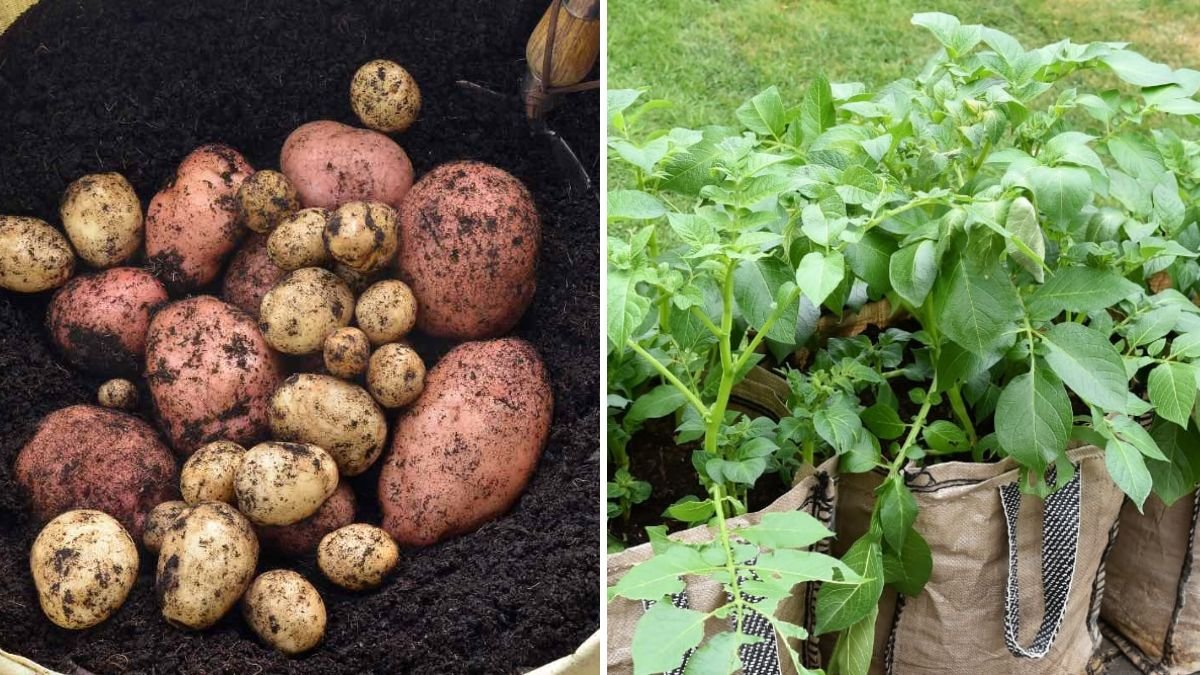Potatoes are a staple crop that can be grown successfully in small spaces using grow bags, making them ideal for urban gardeners, balcony growers, and anyone with limited garden space. Grow bags provide excellent drainage, root aeration, and portability, enabling gardeners to grow healthy, productive potato plants without traditional in-ground planting. With careful planning, soil preparation, and maintenance, grow bags can yield a bountiful harvest of delicious potatoes.
This guide covers choosing grow bags, selecting potato varieties, planting, soil preparation, watering, fertilization, pest management, and harvesting techniques for a successful potato crop.
Why Use Grow Bags for Potatoes?
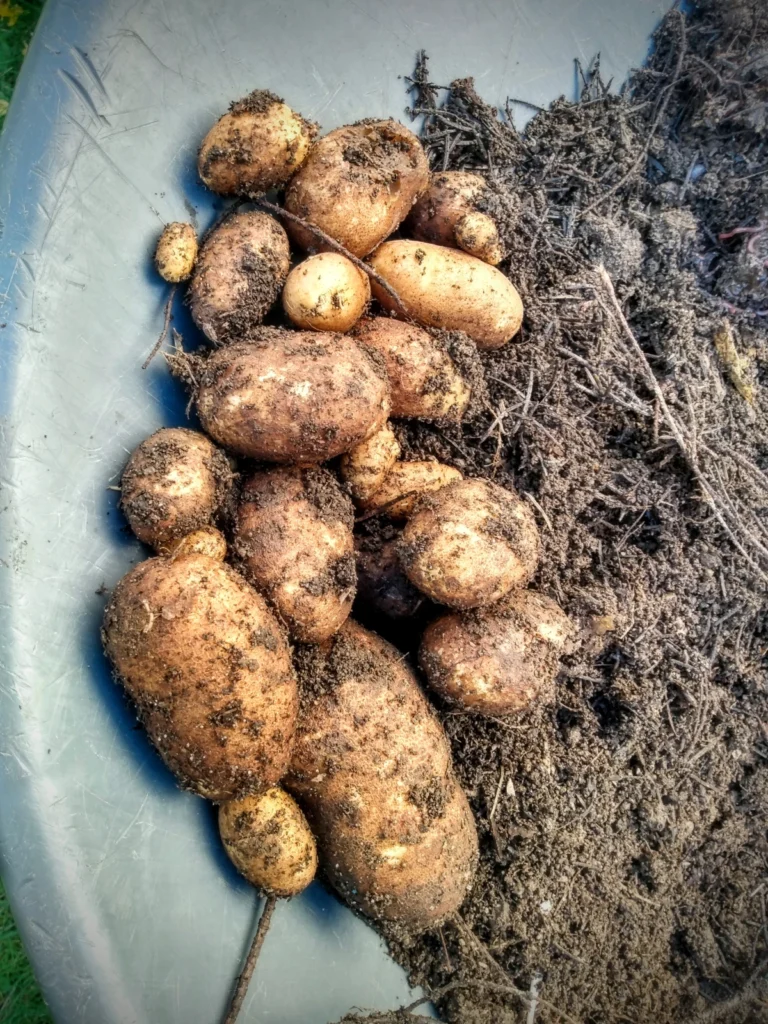
Grow bags offer several advantages for potato cultivation:
- Space Efficiency: Ideal for balconies, patios, and small gardens where in-ground planting isn’t possible.
- Improved Drainage: Prevents waterlogging, reducing the risk of root rot and fungal diseases.
- Root Aeration: Promotes healthy tuber development through better airflow.
- Portability: Easy to move to optimize sunlight exposure or protect from harsh weather.
- Ease of Harvesting: Tubers can be accessed easily by dumping the soil from the bag, reducing damage to potatoes.
Grow bags combine convenience and productivity, making them perfect for urban and small-space gardening.
Step 1: Choosing the Right Potato Variety
Selecting the appropriate potato variety ensures a successful harvest:
- Early Varieties: ‘Yukon Gold’, ‘Red Chieftain’, and ‘Charlotte’ mature in 70–90 days. Ideal for quick harvests.
- Maincrop Varieties: ‘Russet’, ‘Maris Piper’, or ‘King Edward’ take 100–120 days but produce larger yields.
- Disease-Resistant Varieties: Look for varieties resistant to blight and pests, especially in humid areas.
- Purpose Consideration: Choose based on taste, texture, and intended culinary use (boiling, baking, frying).
Variety selection impacts yield, taste, and harvest time, so choose based on your needs and growing conditions.
Step 2: Selecting and Preparing Grow Bags
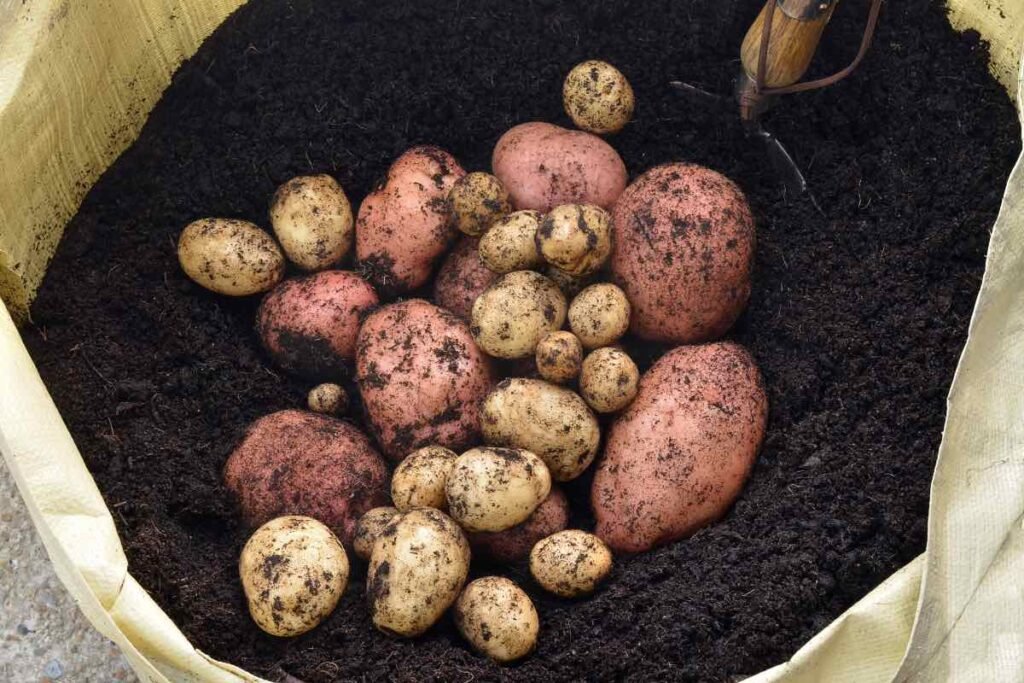
Grow bag choice is critical for potato growth:
- Size: Use bags 10–15 gallons (40–60 liters) for 1–2 potato plants. Larger bags produce higher yields.
- Material:
- Fabric Grow Bags: Promote aeration and prevent waterlogging.
- Plastic Bags: Retain moisture but need proper drainage holes.
- Drainage: Ensure the bag has holes or cut slits at the bottom for excess water to escape.
- Portability: Lightweight bags make it easy to move plants to optimize sunlight or protect from heavy rain.
Proper bag selection ensures healthy roots, proper drainage, and vigorous plant growth.
Step 3: Preparing Soil for Potatoes
Potatoes require loose, nutrient-rich, well-draining soil:
- Potting Mix: Avoid compacted garden soil; use a blend of garden soil, compost, and coco coir.
- Soil Texture: Light, sandy loam is ideal for tuber formation. Heavy clay soils may cause rot.
- Fertilization: Mix in slow-release fertilizer or well-rotted manure to provide nutrients throughout the growth cycle.
- pH Level: Slightly acidic soil (pH 5.5–6.5) prevents common diseases like scab.
Well-prepared soil supports healthy roots and encourages high tuber yields.
Step 4: Choosing Seed Potatoes
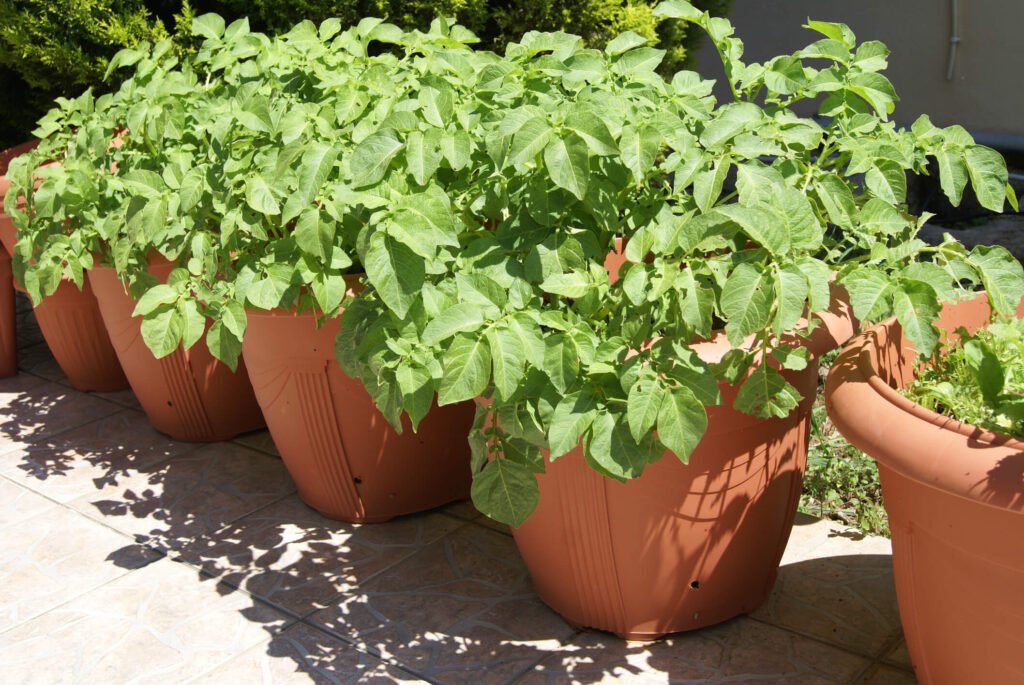
Seed potatoes are essential for healthy plants:
- Certified Seed Potatoes: Ensure disease-free planting material. Avoid supermarket potatoes treated with sprout inhibitors.
- Sprouting: Pre-sprout potatoes 2–4 weeks before planting in a warm, bright area. Small shoots (1–2 inches) indicate readiness.
- Cutting Large Tubers: Cut large seed potatoes into pieces with at least one or two eyes each; allow them to dry for 24 hours before planting to prevent rot.
Healthy seed potatoes increase germination rates and reduce disease risk.
Step 5: Planting in Grow Bags
Planting potatoes in grow bags requires a layering technique:
- Initial Soil Layer: Fill the bottom 6 inches with soil and compost mixture.
- Plant Seed Potatoes: Place sprouted seed potatoes on the soil, eyes facing up.
- Covering: Cover with 3–4 inches of soil.
- Hilling: As shoots grow, add more soil or compost around stems, leaving only the top leaves exposed. Repeat every 2–3 weeks to encourage tuber formation.
- Spacing: Plant 1–2 potatoes per bag, leaving adequate space for tuber development.
Layered planting supports tuber growth and reduces sun exposure, which can turn potatoes green and inedible.
Step 6: Watering Potatoes in Grow Bags
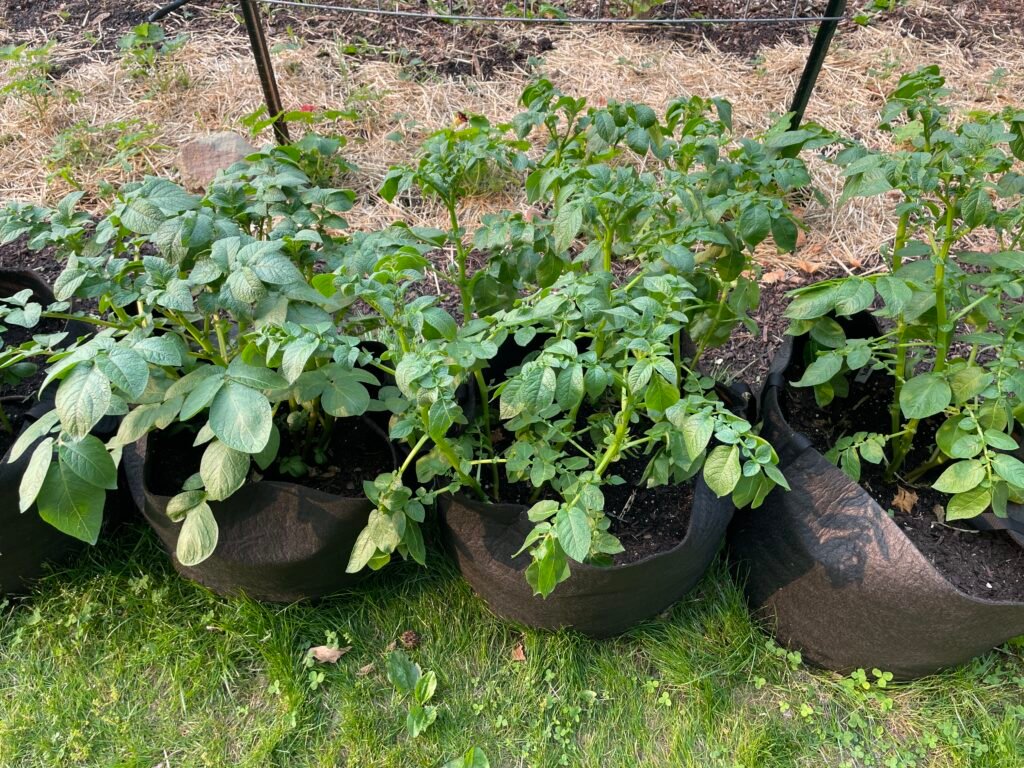
Consistent watering is critical:
- Frequency: Keep soil evenly moist; water when the top 1–2 inches feel dry.
- Avoid Overwatering: Too much water can cause rot, while insufficient water reduces tuber size.
- Watering Method: Slow, deep watering ensures roots access adequate moisture.
- Mulching: Apply a light mulch layer on top to reduce evaporation and maintain soil temperature.
Proper watering promotes tuber formation and prevents plant stress.
Step 7: Fertilization and Nutrient Management
Potatoes are heavy feeders:
- Balanced Fertilizer: Use a high-potassium fertilizer to encourage flowering and tuber development.
- Organic Alternatives: Compost tea or diluted fish emulsion supports healthy growth.
- Timing: Fertilize every 3–4 weeks during active growth. Avoid excessive nitrogen, which produces lush foliage but fewer tubers.
Nutrient-rich soil ensures robust plants and abundant harvests.
Step 8: Pest and Disease Management
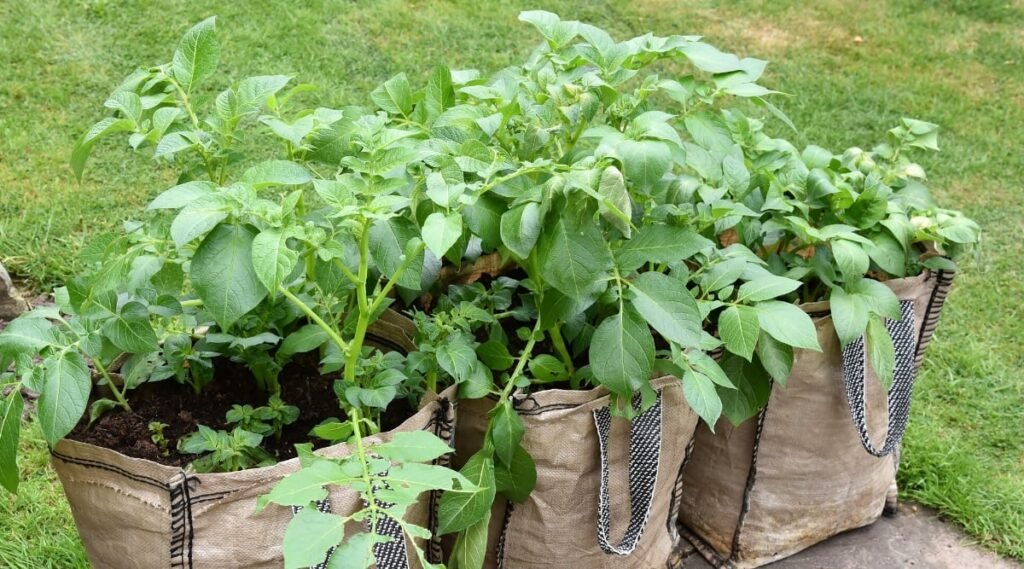
Container potatoes are susceptible to pests and diseases:
- Common Pests: Aphids, Colorado potato beetles, and slugs.
- Preventive Measures: Inspect leaves regularly, use neem oil, or introduce beneficial insects like ladybugs.
- Common Diseases: Late blight and powdery mildew; prevent by providing proper spacing, drainage, and airflow.
- Hygiene: Remove diseased leaves promptly to prevent spread.
Proactive management reduces crop loss and ensures healthy tubers.
Step 9: Light and Environmental Requirements
Potatoes need the right environment for maximum yield:
- Sunlight: Provide 6–8 hours of direct sunlight daily for optimal growth.
- Temperature: Ideal daytime temperature is 65–75°F (18–24°C); avoid frost.
- Air Circulation: Proper spacing and bag placement prevent fungal diseases.
- Protection: Move grow bags or provide shade during extreme heat to prevent stress.
Balancing light, temperature, and airflow maximizes plant vigor and tuber development.
Step 10: Harvesting Potatoes from Grow Bags
Harvesting potatoes in grow bags is simple and convenient:
- Early Harvest: Young “new potatoes” can be harvested 8–10 weeks after planting.
- Mature Harvest: Maincrop potatoes are ready 12–16 weeks after planting when foliage starts yellowing.
- Harvest Method: Dump the bag and gently remove soil to collect tubers, minimizing damage.
- Curing: Allow harvested potatoes to dry in a cool, dark place for a few days before storage.
- Storage: Store in a dark, cool, well-ventilated area to prolong shelf life.
Grow bags make harvesting easier while preserving tuber quality.
Additional Tips for Success
- Stagger Planting: Plant in intervals to ensure a continuous harvest.
- Rotate Soil: Avoid replanting potatoes in the same soil annually to prevent disease build-up.
- Companion Planting: Grow herbs like basil or marigolds nearby to deter pests naturally.
- Regular Inspection: Check for pests, nutrient deficiencies, and proper soil moisture weekly.
- Bag Maintenance: Replace or refresh soil after each harvest for optimal results.
Implementing these tips ensures consistent growth, high yields, and minimal plant stress.
Conclusion
Growing potatoes in grow bags is an efficient and practical method for urban and small-space gardening. By selecting the right varieties, using suitable containers, preparing well-draining and nutrient-rich soil, and following proper watering, fertilization, and pest management practices, gardeners can enjoy a bountiful harvest of fresh, homegrown potatoes.
The convenience of grow bags allows for portability, easier maintenance, and simplified harvesting, making potato cultivation accessible even for beginners. With attention to detail, patience, and consistent care, grow bag gardening transforms limited spaces into productive, sustainable, and rewarding potato gardens.
